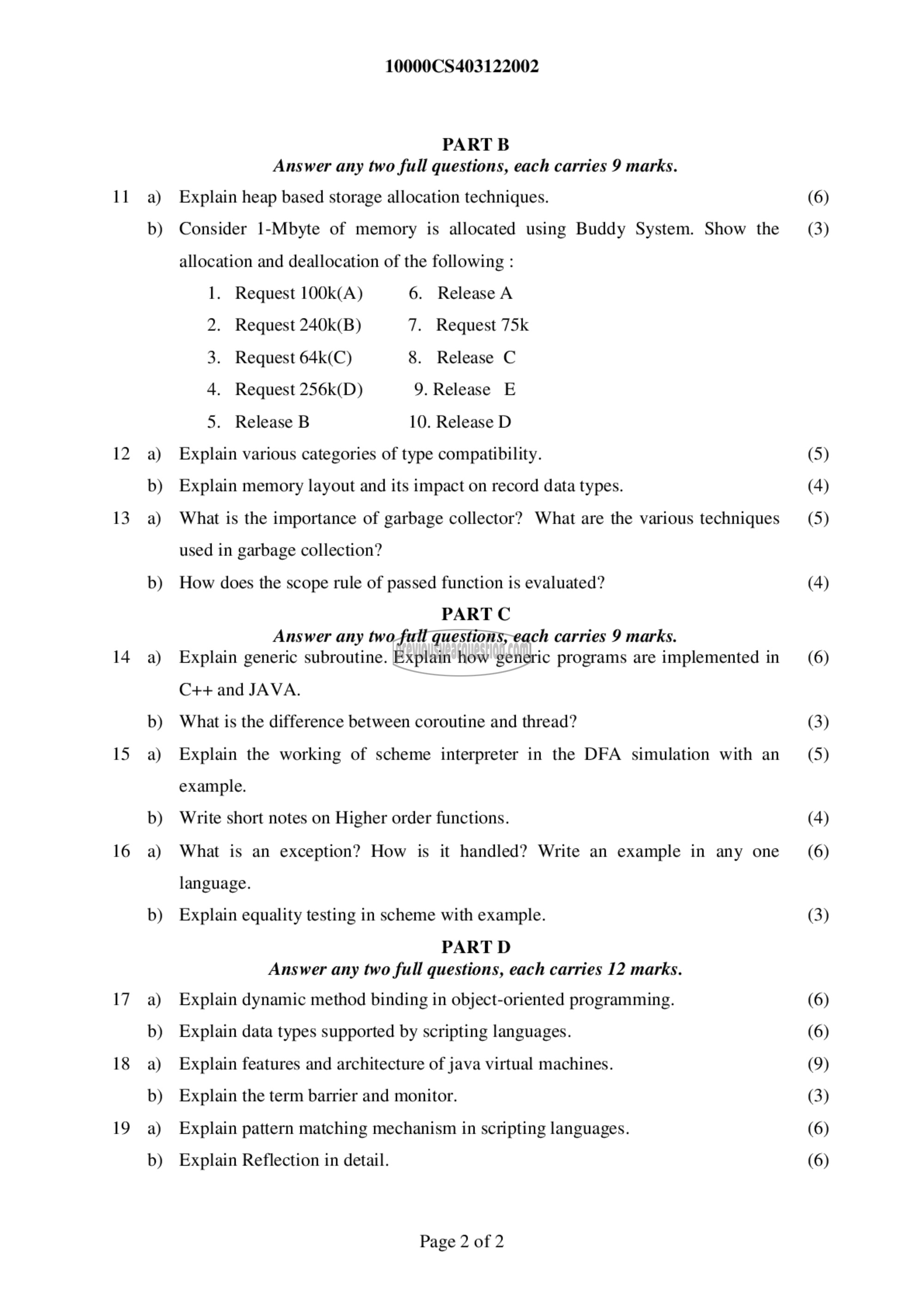APJ ABDUL KALAM TECHNOLOGICAL UNIVERSITY Previous Years Question Paper & Answer
Semester : SEMESTER 7
Subject : Programming Paradigms
Year : 2020
Term : DECEMBER
Branch : COMPUTER SCIENCE AND ENGINEERING
Scheme : 2015 Full Time
Course Code : CS 403
Page:2
11
12
13
14
15
16
17
18
19
a)
b)
a)
b)
a)
b)
a)
b)
a)
b)
a)
b)
a)
b)
a)
b)
a)
b)
10000CS403122002
PART छ
Answer any two full questions, each carries 9 marks.
Explain heap based storage allocation techniques.
Consider 1-Mbyte of memory is allocated using Buddy System. Show the
allocation and deallocation of the following :
1. Request 100k(A) 6. Release A
2. Request 240k(B) 7. Request 75k
3. Request 64k(C) 8. Release C
4. Request 256k(D) 9. Release E
5. Release B 10. Release D
Explain various categories of type compatibility.
Explain memory layout and its impact on record data types.
What is the importance of garbage collector? What are the various techniques
used in garbage collection?
How does the scope rule of passed function is evaluated?
PART ட
Answer any two full questions, each carries 9 marks.
Explain generic subroutine. Explain how generic programs are implemented in
C++ and JAVA.
What is the difference between coroutine and thread?
Explain the working of scheme interpreter in the DFA simulation with an
example.
Write short notes on Higher order functions.
What is an exception? How is it handled? Write an example in any one
language.
Explain equality testing in scheme with example.
PART D
Answer any two full questions, each carries 12 marks.
Explain dynamic method binding in object-oriented programming.
Explain data types supported by scripting languages.
Explain features and architecture of java virtual machines.
Explain the term barrier and monitor.
Explain pattern matching mechanism in scripting languages.
Explain Reflection in detail.
Page 2 of 2
(6)
(3)
(5)
(4)
(5)
(4)
(6)
(3)
(5)
(4)
(6)
(3)
(6)
(6)
(9)
(3)
(6)
(6)
